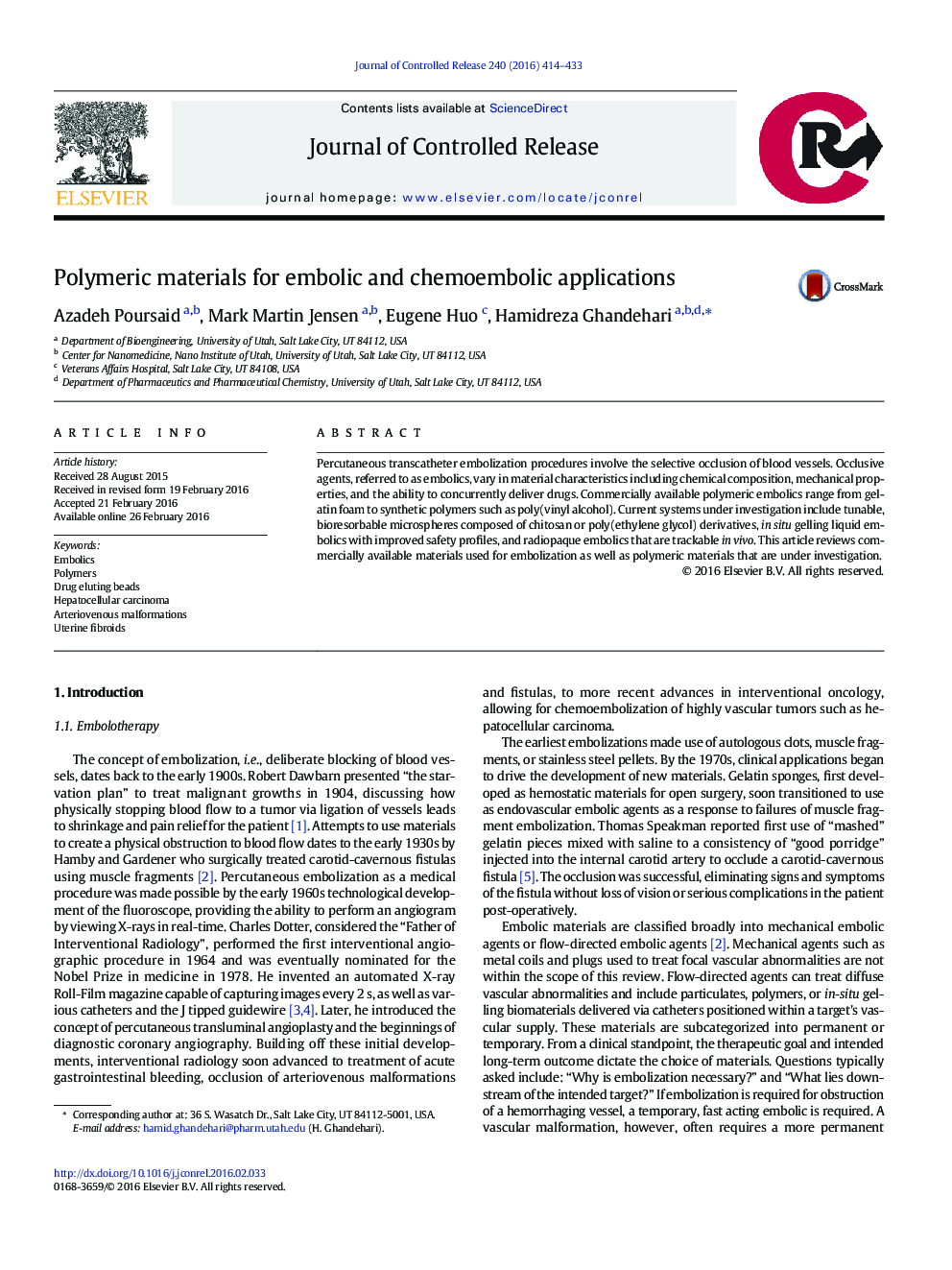| Article ID | Journal | Published Year | Pages | File Type |
|---|---|---|---|---|
| 5433993 | Journal of Controlled Release | 2016 | 20 Pages |
Percutaneous transcatheter embolization procedures involve the selective occlusion of blood vessels. Occlusive agents, referred to as embolics, vary in material characteristics including chemical composition, mechanical properties, and the ability to concurrently deliver drugs. Commercially available polymeric embolics range from gelatin foam to synthetic polymers such as poly(vinyl alcohol). Current systems under investigation include tunable, bioresorbable microspheres composed of chitosan or poly(ethylene glycol) derivatives, in situ gelling liquid embolics with improved safety profiles, and radiopaque embolics that are trackable in vivo. This article reviews commercially available materials used for embolization as well as polymeric materials that are under investigation.
Graphical abstractDownload high-res image (220KB)Download full-size image
